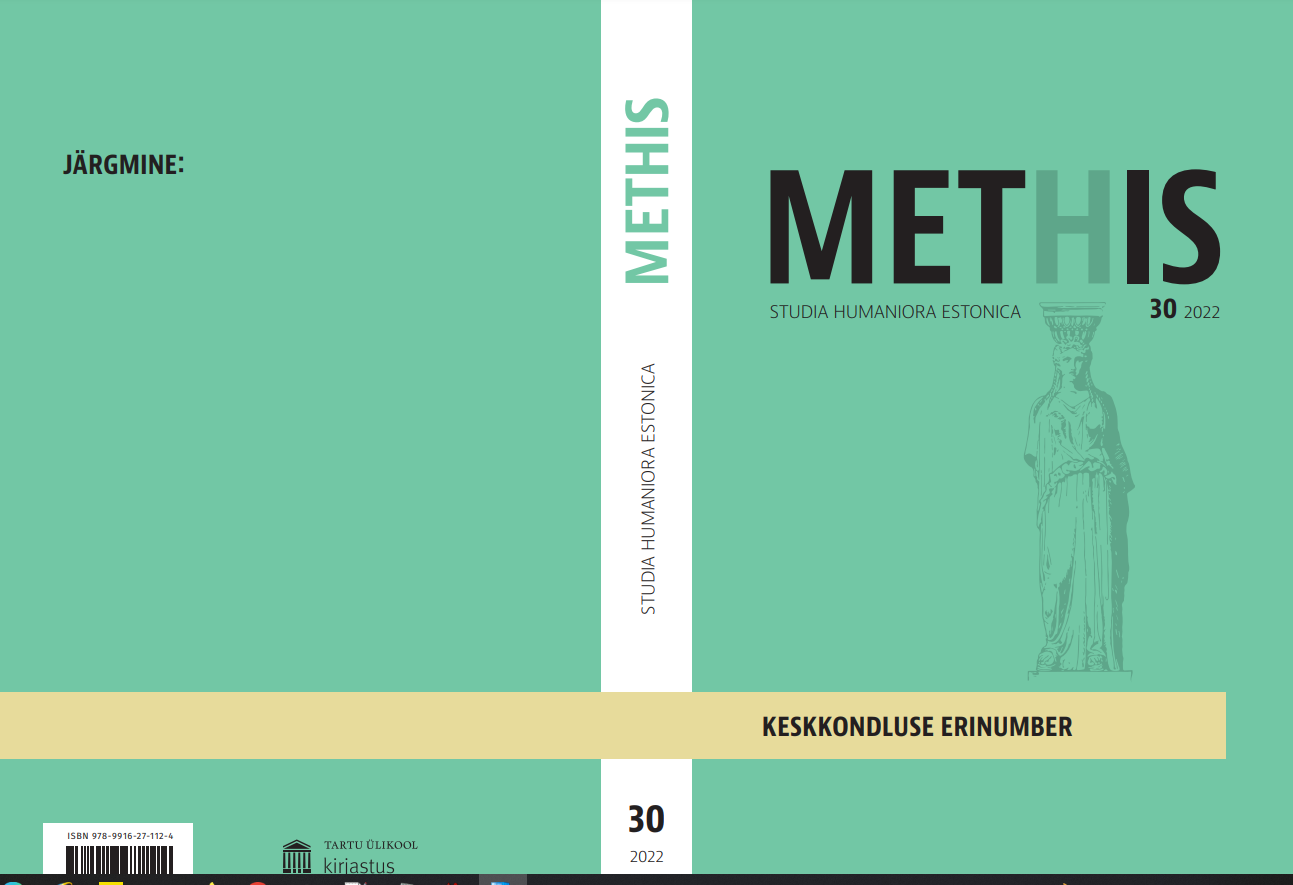Kunst, keskkond ja keskkonnaliikumine Eestis 1960.–1980. aastatel / Art, Environment, and Environmentalism in Estonia in the 1960s–1980s
mõningatest hästi unustatud seostest ja suundumustest / on Some Forgotten Connections and Tendencies
DOI:
https://doi.org/10.7592/methis.v24i30.22108Keywords:
Eesti ja Ida-Euroopa kunstiajalugu, keskkonnaaktivism, ökokriitika, nõukogude uuringud, Estonian and Eastern European art history, environmentalism, ecocriticism, Soviet studiesAbstract
Artikkel vaatleb keskkonnaprobleemide kajastumist ja kajastamist Eesti kunstis 1970.–1980. aastatel, käsitledes viise, kuidas Eesti kunst (ennekõike maal ja graafika) reageerib keskkonnaprobleemide ja looduskaitse esiletõusule nii kohalikus kui globaalses plaanis. Teiseks uuritakse, millisena nägid kunsti rolli Eesti looduskaitsjad ehk millist kunsti, lähenemisviise ja teemasid nemad keskkonna kujutamisel soosisid. Laiemas plaanis seostub artikkel sotsialismileeri keskkonnaliikumiste ümbermõtestamise uue lainega, mis loob uue tõlgendusliku ruumi ka sotsialismileeri kultuuri ja keskkondluse seostele.
Summary
The article focuses on the representation of environmental issues in Estonian art from the turn of the 1960s–1970s until the 1980s, examining the different ways in which it reacted to the rising awareness of, and concern for, environmental problems on the local as well as global levels. While the emergence of environmental topics in art is often linked to avant-garde practices such as land art or performance, this article mainly focuses on more traditional forms of art such as painting and graphic print, on the grounds that this enables to discuss a wider body of works and include artists beyond the modernist canon. As the analysis of Late Soviet Estonian art from ecocritical perspectives is only beginning, the present study does not aim at making any definite or extensive claims, but rather offers some preliminary thoughts on how to map the diverse approaches to the changing environment that are becoming increasingly more noticeable in the art of the period. Asking when environmental issues become visible in Estonian art, the article points to different approaches and bodies of work.
The late 1960s witnessed the rise of a new generation of painters in Estonia whose works mark a radical shift from the collective and extractivist values of Socialist modernism. Several of their works could also be considered as landmarks in the changing attitude towards the environment, as they questioned the progress of industrial modernity, as well as pointed to the complexities and uneasiness of the increasing environmental pollution. In parallel to this, also a tradition of explicit visualisations of environmental problems was developing which can be seen also in the works of the established artists of the period. Another strand of works relates environmental issues to more universal global problems, entangling them with militarisation, the threat of nuclear war, etc. One of the questions this tradition raises is concerned with the relationship between the global and the local. Many of these works with themes concerned with environmental problems relate vividly to the transnational discussions and symbols of environmentalism in the 1970s and 1980s, while the links between the global problems and the local context remain more ambiguous.
The article also addresses the lack of research and reception traditions concerning the relations between Estonian art, the environment and environmentalism. The art of the 1970s and 1980s gradually comes to bear witness to the expansion of an entirely new approach to the environment, as many of the leading painters and printmakers of the period abandon the genres of landscapes and cityscapes and instead begin to show the natural and the human-made or technological environments as closely entangled and inseparable. While this change has so far been interpreted in the generic context and thus related to the transformation of the tradition of landscape painting, the shift can also be reinterpreted as a sign of an entirely new perception of the environment according to which there exists no nature that would be separable from the human-affected environments.
Next to the developments of visual culture, the article also addresses connections between the art world and the increasingly more popular nature conservation societies and activities, looking at the Estonian nature conservationists’ ideas regarding the role of art in environmentalism, as well as their vision of the topics and approaches that art should deploy in order to contribute to environmentalism. Highlighting the conservationists’ preference for visualisations of the beauty of wild nature and harmonious co-existence with it, the article links this with the spread of a retrospective and ethnographic turn in the Late Soviet period. The fascination, or even escaping into the past, is visible in different spheres of culture, as well as subject matters that range from peasant and indigenous culture to the more elite heritage of the pre-revolutionary period. The close combination of the conservation nature and (both folk and noble) heritage is also embodied in the founding of the first national park in Estonia, Lahemaa in 1971. The article also asks whether the conservationists’ preference of the art idealising the past indigenous, folk, or aristocratic modes of co-existence with nature also had an effect on their relations with the art dealing with the issues of contemporary environment, as well as about the afterlife of such attitudes. On a broader level, the article also relates to the new interpretations of Eastern European environmentalism. While the global history of environmental activism and thought has largely been defined by Western norms and standards, many recent studies point to the extent and heterogeneity of environmentalism in the socialist countries well before the late 1980s, a decade that has often been associated with the beginnings of environmental activism in this part of the world.


